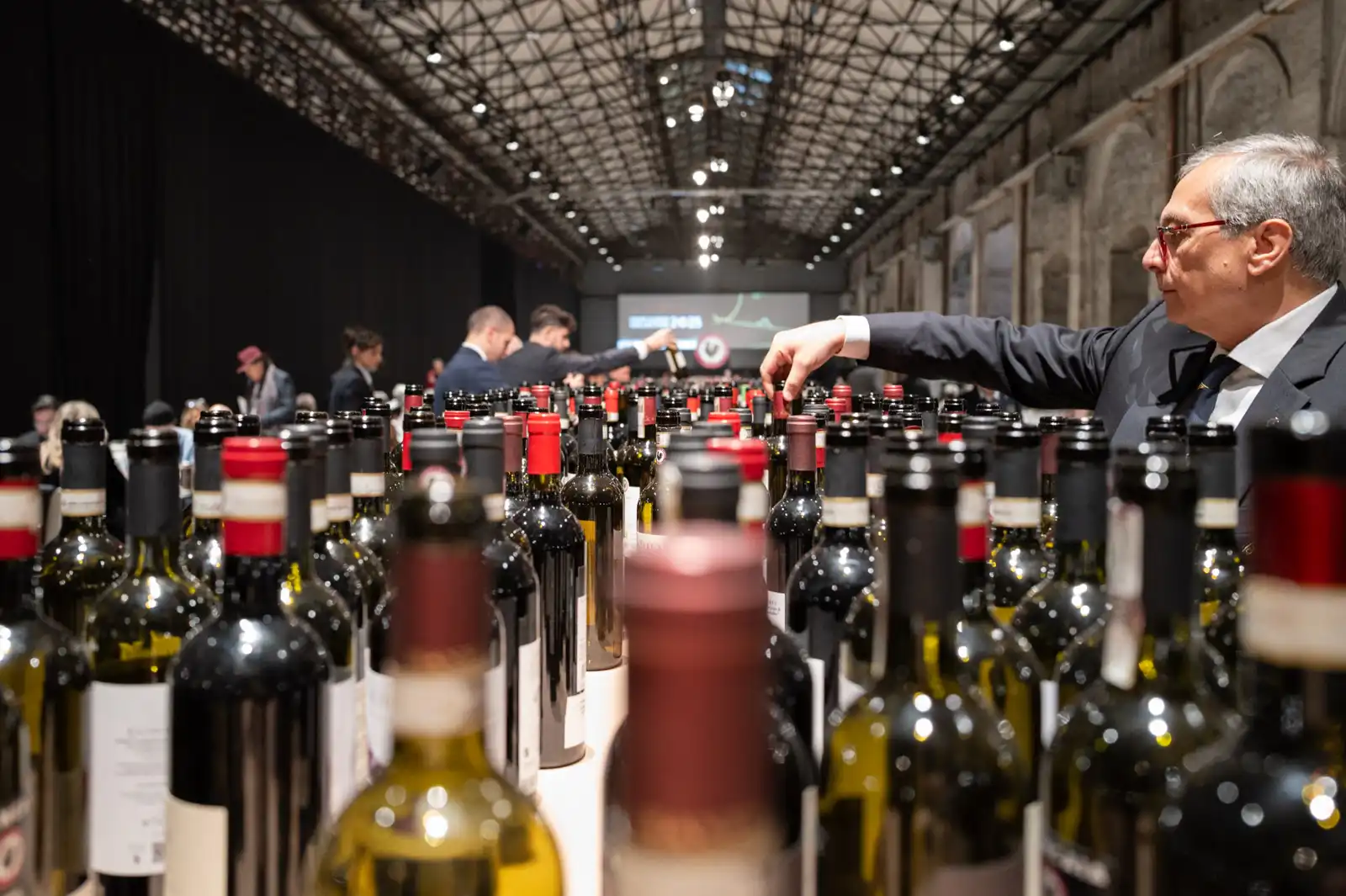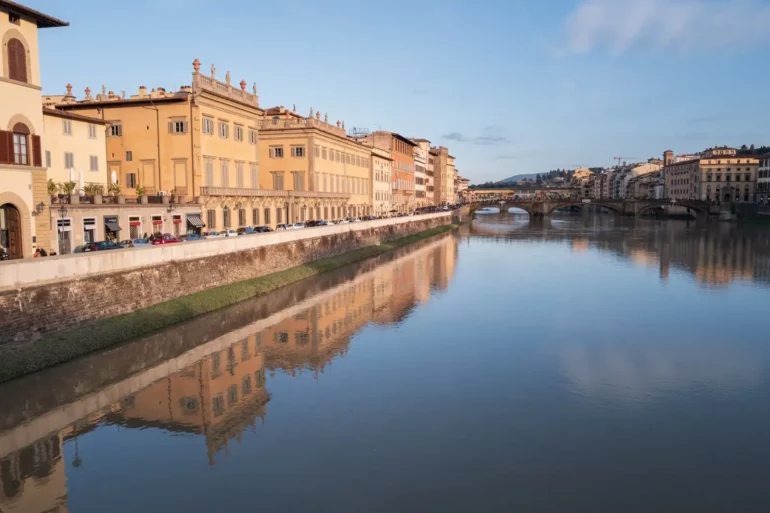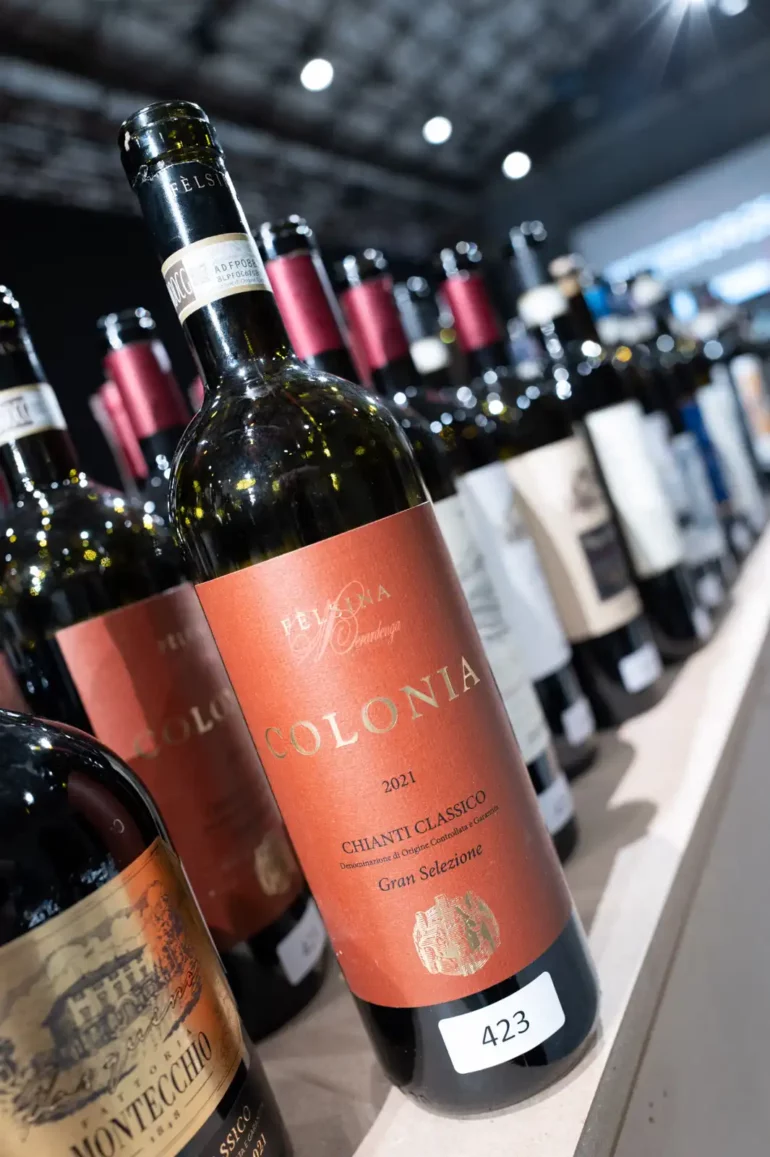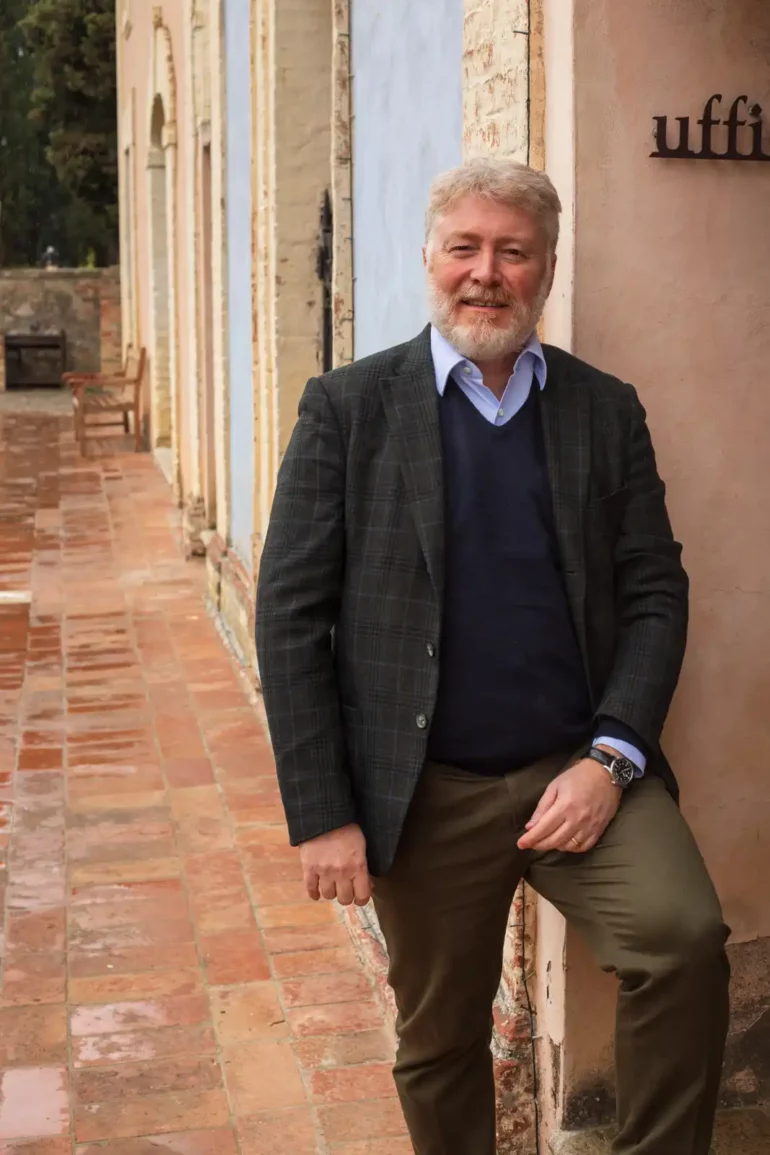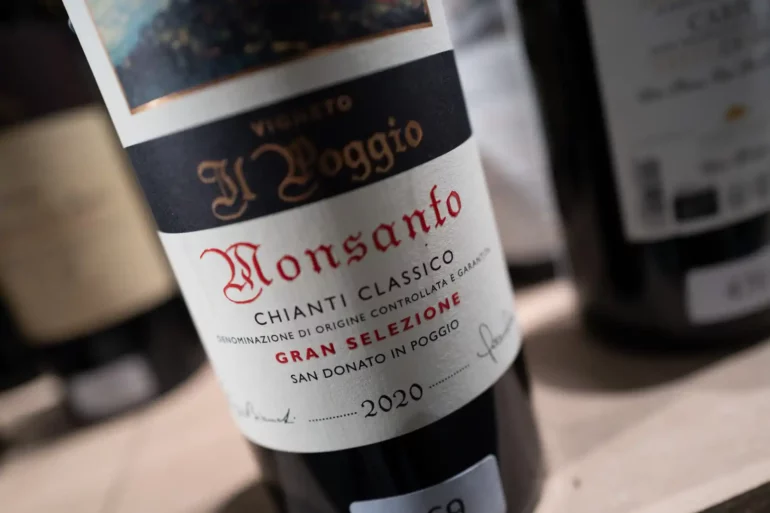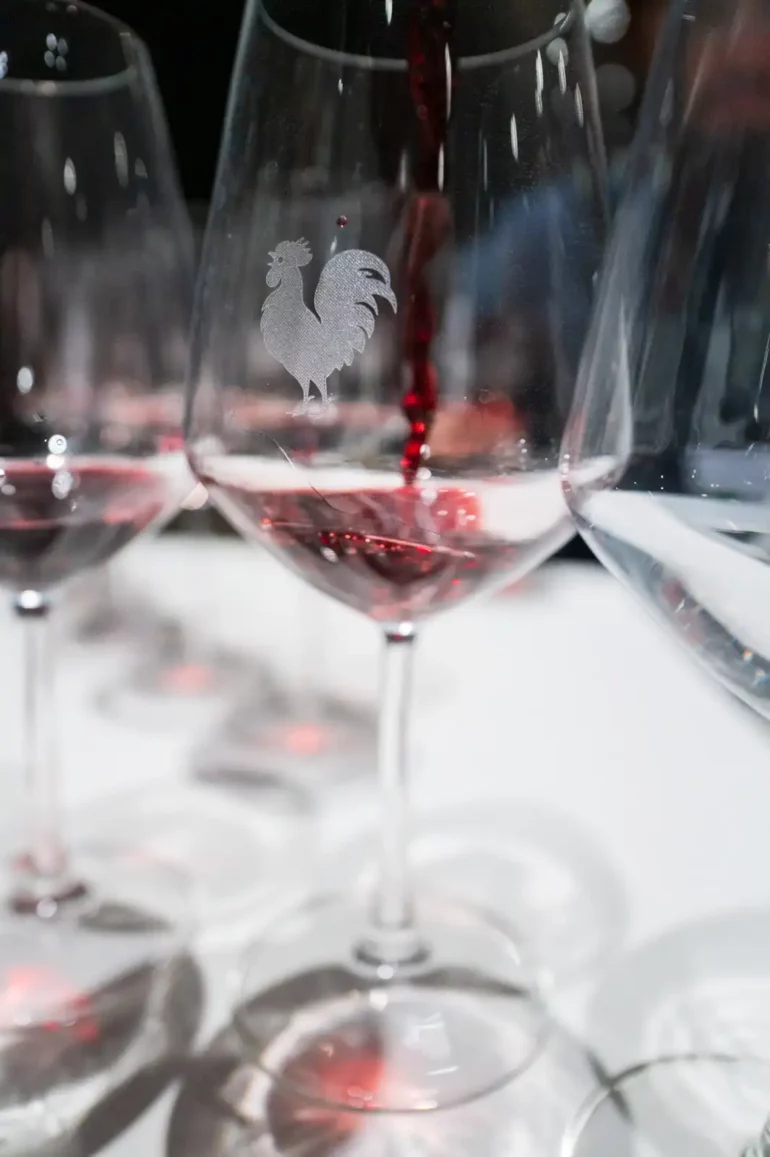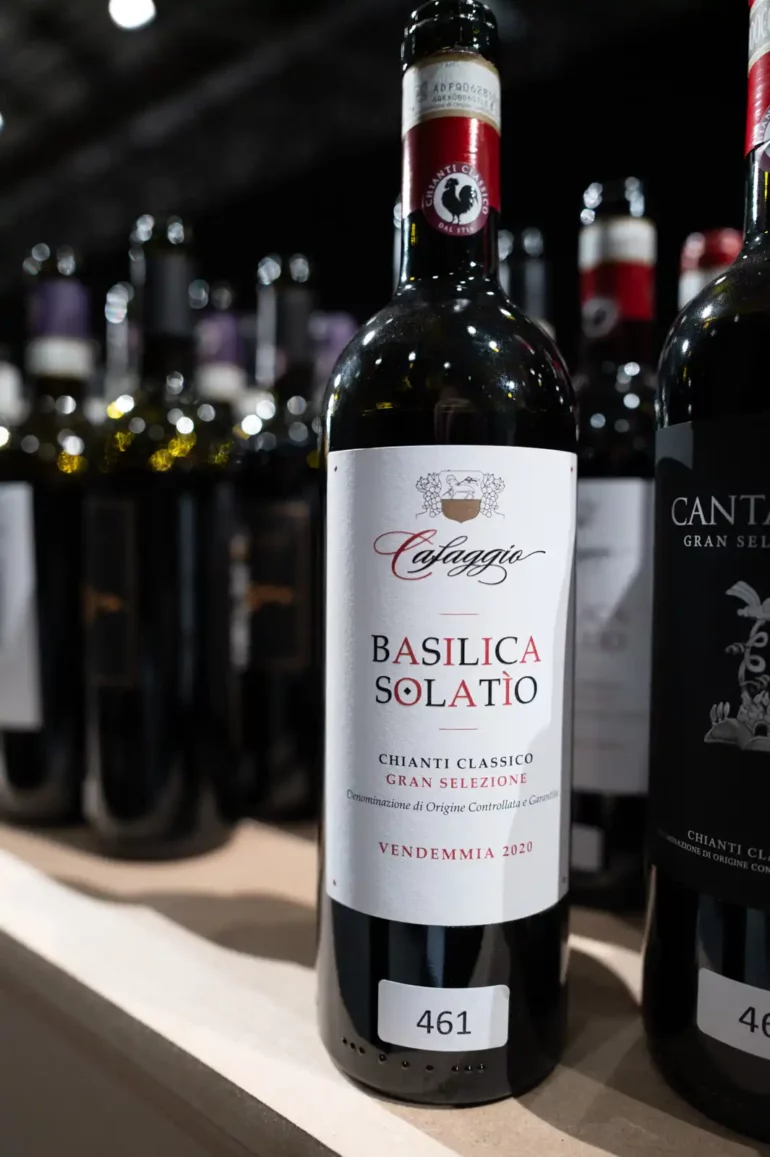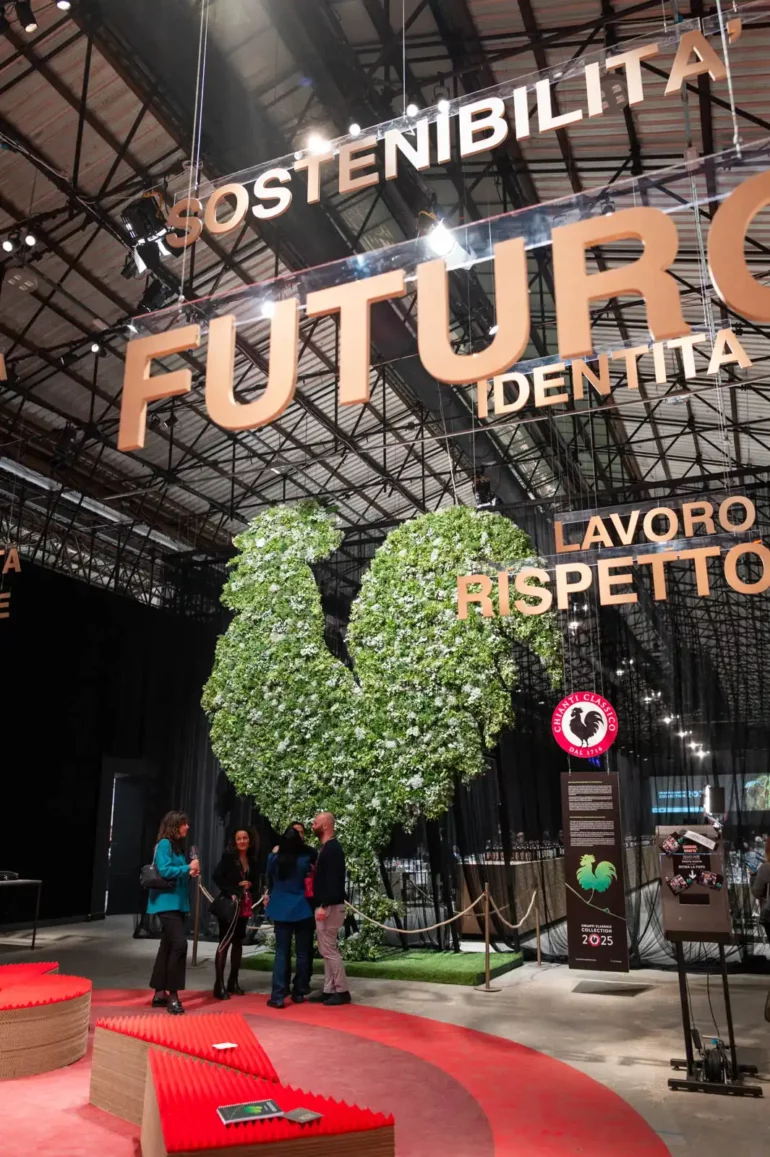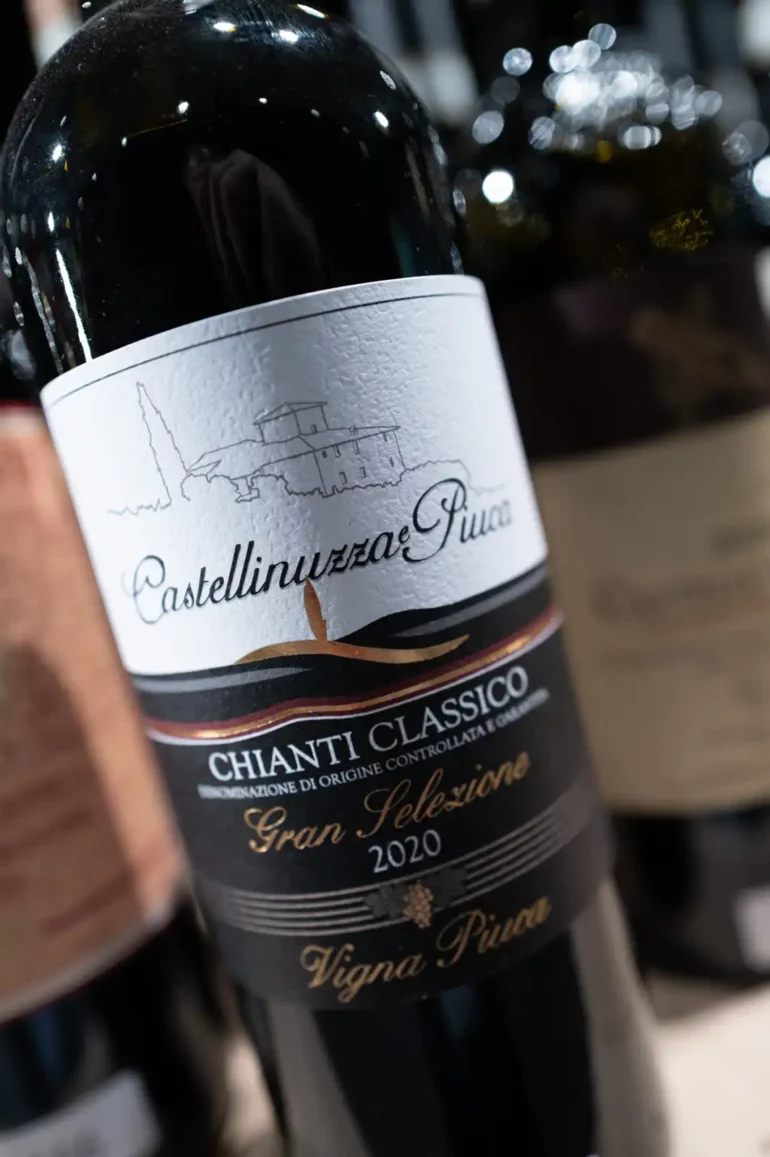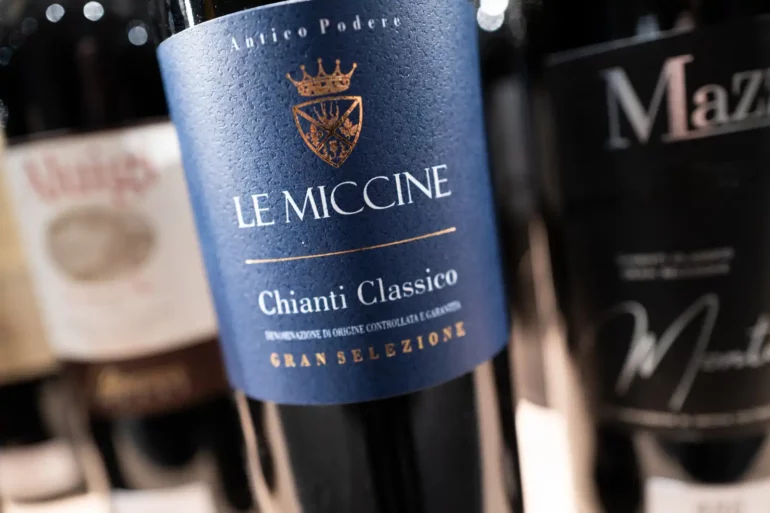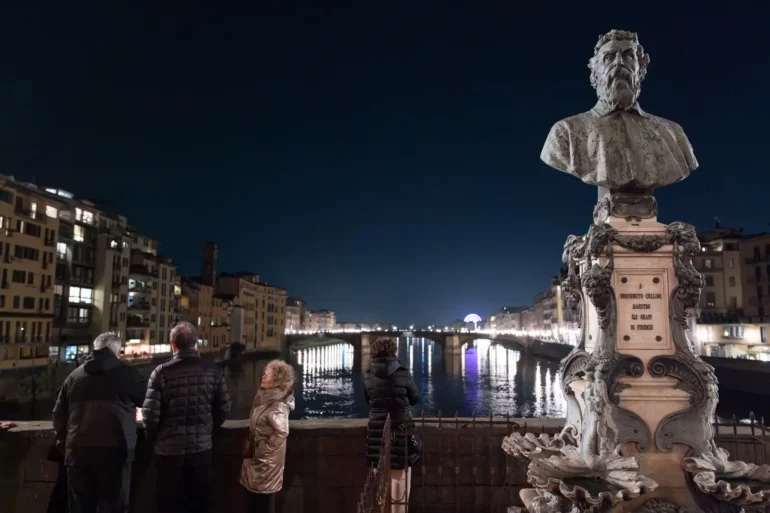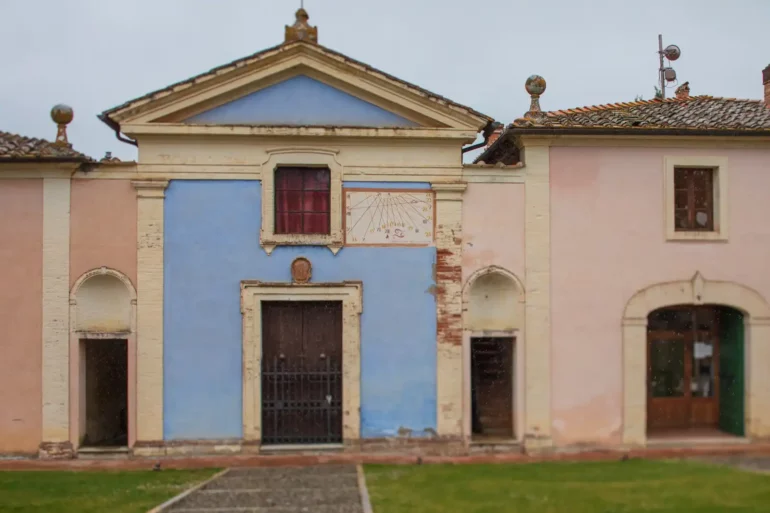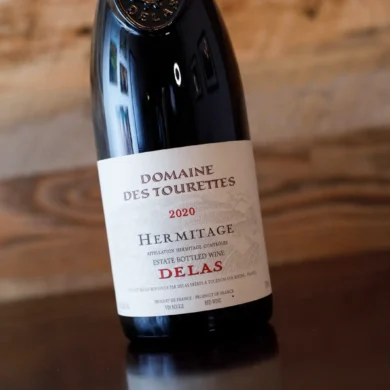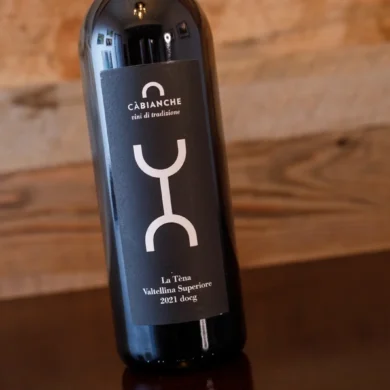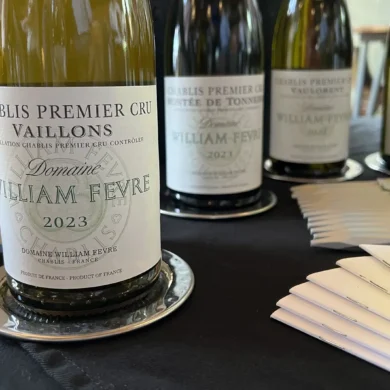For the second year in a row, I attended the Chianti Classico Collection, a two-day, new-release party held at the Stazione Leopolda, a former train station in the heart of Florence, Italy. Chianti Classico continues its winning streak with these new wines. I was massively impressed, particularly with the Gran Selezione offerings this year.
To make this paying subscriber report digestible, I am publishing three different articles, one for each of the appellations key categories: Gran Selezione, Riserva and Annata. Today we start with the Gran Selezione.
First: a Definition of Gran Selezione
Chianti Classico is a DOCG-level appellation located in between Florence and Siena. The wines are devoted to the primacy of Sangiovese, but they allow a certain degree of blending depending on the category. The DOCG divides its wines into three categories: Annata (released annually), Riserva (minimum aging 24 months) and Gran Selezione.
For those who make them, Gran Selezione are the top selections from their vineyards: the wines with the greatest aging capacity, the most depth and the most terroir sensitivity. The wines must be (a) 90% Sangiovese with a maximum of 10% native Tuscan grapes, as of the 2023 vintage; (b) aged for 30 months (of which, three of those months must be in bottle); and (c) from estate-owned vineyards. Previous to 2023, the percentages were 80% Sangiovese, and international grapes were also allowed, so all of that is at play with the wines listed below. Furthermore, only the Gran Selezione can append the village name to the label, but that does not begin until the 2022 vintage release, which might start hitting shelves later this year.
Several wineries still opt-out of the Gran Selezione, either because they do not have the resources or because their top Chianti Classico has a blend that does not conform to these parameters (e.g. fruit from non-estate vineyards, or a blend from different zones, etc). In these select cases, the top wine is the Riserva, which we will get to in another report.
Take note: Producers can opt to age the wines longer than the minimum, and many do. As a result, this report on new releases features three different vintages: 2021, 2020 and 2019.
3 Ways to Approach Gran Selezione
- Collect Them – The wines of Chianti Classico Gran Selezione have great aging potential, even if they are more “user friendly” upon release than Brunello di Montalcino or Barolo (to compare two other titans of Italy). Generally, I think once you pass the five year mark, things get interesting, and even more so around the 10 year mark.
- Order Them for Multiple Courses – Because of their persistence and tannic structure, these wines are quite versatile compared to other “full bodied reds.” Consider them if you are at a fine-dining restaurant with multiple courses, or dining with a party ordering a variety of dishes.
- Use Them to Survey the Lay of the Land – As Chianti Classico becomes more focused on its terroir from village to village, the place for curious drinkers to explore these nuances is here. As noted, not every estate makes a Gran Selezione, but only Gran Selezione can call out the village name (i.e. UGA) on the label. Even if that is not explicitly called out yet, all of these wines below are specific in their origin, which I try to add in these reviews.
Navigate This Chianti Classico Guide (A to Z)
Several wines earned top marks, but I am calling out my three favorites — one from each vintage — with a “Top wine” callout.
- 2019 Bindi Sergardi “Mocenni 89” Chianti Classico Gran Selezione
- 2020 Cafaggio “Basilica Solatio” Chianti Classico Gran Selezione
- 2020 Carpineta Fontalpino “Vigna Montaperto” Chianti Classico Gran Selezione
- 2020 Castellinuzza e Piuca “Vigna Piuca” Chianti Classico Gran Selezione
- 2020 Castello di Monsanto “Il Poggio” Chianti Classico Gran Selezione
- 2021 Castello di Volpaia “Il Puro Casanova” Chianti Classico Gran Selezione
- 2021 Colombaio di Cencio “Montelodoli” Chianti Classico Gran Selezione
- 2021 Fèlsina “Colonia” Chianti Classico Gran Selezione
- 2021 Fontodi “Vigna del Sorbo” Chianti Classico Gran Selezione
- 2021 Istine “Vigna Istine” Chianti Classico Gran Selezione (Top wine)
- 2020 Le Cinciole “Aluigi” Chianti Classico Gran Selezione
- 2020 Le Miccine Chianti Classico Gran Selezione
- 2019 Rocca di Montegrossi “Vigneto San Marcellino” Chianti Classico Gran Selezione (Top wine)
- 2020 Vecchie Terre di Montefili “Vigna nel Bosco” Chianti Classico Gran Selezione (Top wine)
- 2021 Villa Calcinaia Conti Capponi “Vigna La Fornace” Chianti Classico Gran Selezione
15 Chianti Classico Gran Selezione to Seek Out
Top Wine: 2021 Istine “Vigna Istine” Chianti Classico Gran Selezione
After tasting a series of burly, heavy-hitting contemporaries, it was so refreshing to be reacquainted with Angela Fronti’s version of Chianti Classico. They’re convivial, complex, generous and delicate. She makes three Gran Selezione, and this year, the standout was the 2021 “Vigna Istine” (★★★★★) from her high-altitude, northwest-facing vineyard in Radda. You will want a Burgundy wine glass for this one: it is beautifully citric with elements of pure cherry and raspberry fruit, fine cotton tannins, and a lightweight essence that is the signature of the Radda terroir at its best.
Angela Fronti has been at the forefront of Chianti Classico’s new wave, and singling out one of her wines is becoming a bit of a routine of mine. But time and time again, they stop me dead in my tracks with their elegance and complexity. She is one of Italy’s best Sangiovese producers at this moment.
2021 Fèlsina “Colonia” Chianti Classico Gran Selezione
Fèlsina’s wines appeal to popular tastes: they can be robust, fruit-forward, even oaky, but rarely in an overbearing way, and they always carry the hallmarks of their sunny vineyards, which are in the Castelnuovo Berardenga UGA in the southern stretches of Chianti Classico. I must admit that this round, Fèlsina’s approach to Chianti Classico translated better than before: their Annata wine was singing, the “Rancia” Riserva shone brilliantly, and then there was this show-stopper. The beautiful aromas of the 2021 “Colonia” (★★★★★) reveal winemaker Giovanni Poggiali’s exceptional skill, for fruit this rich often loses some of its detail. Instead, I was offered happy memories of fresh rosemary, juniper berry, tobacco and cured pork on the nose. For fans of bigger wines with a little swagger, this is the go-to bottle of the year, for its sapidity and ample, angular tannins suggest a long life ahead.
On a side note, if you are visiting Chianti Classico, this is an estate worthy of a visit. The cellar extends beneath a converted historic military outpost that once served as a grand stable for horses.
2021 Fontodi “Vigna del Sorbo” Chianti Classico Gran Selezione
Two of the wines featured here offer differing takes on what many considered to be Chianti Classico’s most distinctive vineyard area: Panzano’s Conca d’Oro. This south-facing, amphitheater-shaped vineyard is a sight to behold, with pretty Panzano on top. Shaped like an overturned scallop shell (its name translates as “golden shell” as well as “golden bowl”) this vineyard is kind to vines seeking warmth and sunlight.
Fontodi is not only Chianti Classico’s most prominent winery (thanks to Giovanni Manetti’s role as consorzio president), it is one of Italy’s most sought-after estates, in large part because of the singularity of “Vigna del Sorbo,” its top Chianti Classico wine from a prime locale in the Conca d’Oro. Fontodi’s Chianti Classico annata is one of the best introductions to the region, but “Vigna del Sorbo” has not earned top marks with me in previous sessions, perhaps because it tends to be so structured and closed with such an early taste.
The 2021 “Vigna del Sorbo” (★★★★ 3/4), however, is quite generous, and it really goes all in. “It is not bold, it is not brash, but it is confident as hell,” I wrote in my raw notes. Rich cherries and a fascinating sense of savory flavor are complemented by pitch-perfect elements of toast and oak seasoning, all of it allowing the taster to negotiate the space and arrive at its long, balanced finish. (See also Cafaggio below, for a different take on the Conca d’Oro).
The Manetti family behind Fontodi also raise a rare, local breed of white cattle, called Chianina (the beef for bistecca alla Fiorentina), whose compost is integrated into farm operations. The Manetti’s also built their fortune initially as terra cotta tile makers.
2021 Castello di Volpaia “Il Puro Casanova” Chianti Classico Gran Selezione
Great wines don’t always reveal themselves right away, which makes these large-scale tastings tricky. In an effort to taste as much as a region offers, it is easy to gloss over a truly beautiful wine and miss what it has to say. I seem to go a lot slower than my contemporaries at these tastings, but it is an approach that yields discoveries such as Volpaia’s 2021 “Il Puro Casanova” (★★★★ 3/4). This wine seemed quite restrained on the nose at first, but it ultimately revealed a vivacious sense of freshness and beautiful elegance that carried through to the finish. Once again, this was a demonstration of classic Radda terroir, with fine cotton tannins, ample acidity and, as the name suggests, pure cherries-and-berries fruit. The personality of Radda’s wines always strike me as the most patient in the DOCG: they want you to take your time, and they reward you with a brilliant sense of conviviality. Castello di Volpaia gets this.
2021 Colombaio di Cencio “Montelodoli” Chianti Classico Gran Selezione
From the heart of Gaiole, Colombaio di Cencio’s 2021 “Montelodoli” (★★★★ 3/4) showed the warmth of the region with darker, softer fruit, but also provided quite a bit of intrigue with a sensation of florality, which isn’t often found in Chianti Classico. There was also a wonderful minerality to this wine, which lent it persistence and enhanced its versatility in terms of food pairings. Cotton tannins give the wine the right amount of grip, while the long finish spoke to the acidity’s persistence.
2021 Villa Calcinaia Conti Capponi “Vigna La Fornace” Chianti Classico Gran Selezione
Long time readers of Opening a Bottle know that I am a regular fan of Montefioralle’s Villa Calcinaia and its wines: few producers offer a more consistent, down-the-middle interpretation of Chianti Classico than winemaker Sebastiano Capponi. Because of this, I taste the estate’s three Gran Selezione wines as a means to gauge the vintage. This year, the 2021 “Vigna La Fornace” (★★★★ 3/4) stood out most, and it revealed the juicy and generous character of the 2021 vintage as well. Fine cotton tannins are complemented by hints of citrus and tobacco, while a mineral finish invites a second sip. La Fornace consistently has the most intense nose of Villa Calcinaia’s wines.
Top Wine: 2020 Vecchie Terre di Montefili “Vigna nel Bosco” Chianti Classico Gran Selezione
In December, I profiled the 2019 of this wine in my Wines to Admire column, and praised it for having “the quintessential Sangiovese spectrum of red fruit, momentous citric-like acidity, with a meaty-edge,” but complained that it wasn’t designated as a Chianti Classico despite so clearly tasting of the appellation.
Well, here it is now, in its rightful place as Chianti Classico Gran Selezione, and the 2020 “Vigna del Bosco” (★★★★★) is gorgeous. This is one of those wines that announces its potential on the nose: here I am, and I’m gonna go the distance. Yes, there is the red fruit, the citrus, the meaty edge, but also a smokiness, the bite of resinous herbs and a bitter note akin to black cocoa. I was especially thrilled by the momentum of its acidity, which felt like a sprinter dashing to the finish line.
Kudos to Vecchie Terre di Montefili’s winemaker Serena Gusmeri. “Vigna nel Bosco” has been one of the region’s most complete and distinctive wines for a few years now. It is a welcome addition to Chianti Classico Gran Selezione.
2020 Castello di Monsanto “Il Poggio” Chianti Classico Gran Selezione
One of Chianti Classico’s most important wines is “Il Poggio,” because of its well documented lifespan in the cellar. The Bianchi family has been laying a portion of these wines down in their cellar at Castello di Monsanto since the 1960s, and when I got a chance last year to taste one of these older, 50-plus-year-old vintages, I was astonished by its energy and pristine quality.
The 2020 “Il Poggio” (★★★★★) is measured, elegant and generous, with ample notes of place: those deep cherry, the famed macchia (dried resinous herbs), and even a touch of savory that reminded me of air-dried beef. There is also a faint hint of violets on the nose. There is soft touch to this wine that somehow juxtaposes its ample strength, as well as a persistent salinity that always shows up with this wine, vintage after vintage. The tannins in the 2020 are assertive, but make no mistake, this wine has a perfect amount of energy.
2020 Cafaggio “Basilica Solatio” Chianti Classico Gran Selezione
A very different expression of the Conca d’Oro can be found in the 2020 “Basilica Solatìo” (★★★★ 3/4) from Cafaggio — a more subdued yet finely etched interpretation of the terroir. I adored this wine’s sense of purpose, with fruity red plum and cherry tones complemented by an ethereal savory character, a particularly radiant and refreshing acidity, and a resinous herbal touch. This wine is a bit more elegant than Fontodi’s “Vigna del Sorbo,” but also more subdued.
Cafaggio’s name refers historically to an enclosed, cultivated field. The first records of this villa date back to 1408, an impressively long heritage even by Chianti Classico standards.
2020 Carpineta Fontalpino “Vigna Montaperto” Chianti Classico Gran Selezione
There is a lot to unpack with Carpineta Fontalpino’s wines, particularly the 2020 “Vigna Montaperto” (★★★★ 3/4), one of two Gran Selezione wines the Cresti family makes. Located in the Castelnuovo Berardenga UGA at the southern edge of Chianti Classico, the fruit here is usually riper, the herbaceous notes a little more bitter from my experience. What comes across here, however, is a wonderful sense of balance. This wine shows poise with fruit-forward aromas, a tinge of bayleaf, and a compelling petrichor-like minerality that lends persistence and endurance through the finish. A highly versatile Gran Selezione.
2020 Le Cinciole “Aluigi” Chianti Classico Gran Selezione
Le Cinciole is yet another Panzano estate to pique my interest at this year’s tasting. I’ve long enjoyed their wines, and “Aluigi” made last year’s list as well. The 2020 “Aluigi” (★★★★ 3/4) comes across as even more savory than what I recall of the 2019: “a great big show of savory force on this wine,” I wrote in my raw notes. The fruit tones come later, but when they arrive, it is classic Chianti Classico territory: Everything is harmonious and in balance with this wine, with the persistence on the finish being a particularly memorable trait.
2020 Castellinuzza e Piuca “Vigna Piuca” Chianti Classico Gran Selezione
The village of Lamole has Chianti Classico’s most distinctive expression in the glass. It is here that high elevation, terraced vineyards, rocky soils and huge tracts of forest lend the wines a distinctive “mountain fruit” profile on the nose and palate.
Last year, I visited I Fabbri in Lamole, and this year, I decided to prioritize a few of the other Lamole wineries at the Chianti Classico Collection. I was delighted to come upon the 2020 “Vigna Piuca” (★★★★ 3/4) from Castellinuzza e Piuca. Showing the high-toned fruit (brightest cherries, radiant orange citrus) that I’ve come to associate from Lamole, the wine also showed ample aromatic complexity with an extension of violet flowers, thyme and minerality. While supple and elegant on the palate, it does need a little time to evolve so that you can fully experience the wine’s many tones.
Like Fontodi, Castellinuzza e Piuca raises Chianina breed cattle on their farm.
2020 Le Miccine Chianti Classico Gran Selezione
Le Miccine has been around since 2010, when Paula Papini Cook — a French-Canadian winemaker — took over the historic property and got to work. However, until now I had not tasted this small estate’s wines. When my tasting table colleague, sommelier Jason Yamasaki from British Colombia, recommended that I check out Paula’s wines, I didn’t hesitate. I’m glad I did. Le Miccine’s 2020 Gran Selezione (★★★★★) is a showstopper, with beautiful aromas that, in concert, could only be evocative of Chianti Classico: dark red cherries, rosemary, blood orange, salt-cured pork. But the magic really happens on the palate where this Gaiole wine goes into overdrive with juicy acidity, remarkable freshness and cotton tannins leading to a rather silky finish. Production is very small, and I’m still trying to confirm that the Gran Selezione will be imported.
Top Wine: 2019 Rocca di Montegrossi “Vigneto San Marcellino” Chianti Classico Gran Selezione
Over the past two Chianti Classico Collections, I have really taken a liking to the wines of Rocca di Montegrossi, which has Marco Ricasoli-Firidolfi at the helm as winemaker (a distant relative of the legendary Baron Bettino Ricasoli who perfected the Chianti blend). The 2019 “Vigneto San Marcellino” (★★★★★) brilliantly reveals the herbal side of Sangiovese (a pure line of dried rosemary), with velvety dark fruit and a hearty, robust presence across the palate. This wine is aged longer than required of Gran Selezione, and that’s perhaps because of the tannins, which still feel very wooly. It is also interesting to note that with this vintage, the estate boldly blended 13% Pugnitello, a local indigenous variety, into their blend. This will need to come under 10% in ensuing vintages per the updated regulations to stay as a Gran Selezione.
2019 Bindi Sergardi “Mocenni 89” Chianti Classico Gran Selezione
Bindi Sergardi is one of the most historic family wineries in Italy: sisters Maddalena Casini Bindi Sergardi and Alessandra Casini Bindi Sergardi, who oversee the estate, are the 23rd generation.
Their 2019 “Mocenni 89” (★★★★ 3/4) is a hyper-specific parcel from their vineyard with ideal exposure, and its cherry, cocoa, rosemary and cured meat aromas were among my favorite from the Chianti Classico Collection. This wine shows great depth and focus, while being juicy yet delicate at the same time.
Note: I was invited to attend the Chianti Classico Collection as a member of the media as part of the annual Anteprima di Toscana. My travel and accommodations to and from Florence were covered. Learn more about our editorial policy.

